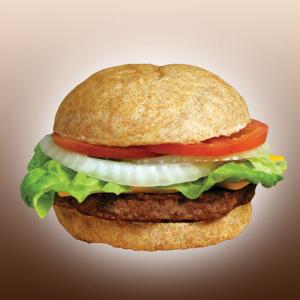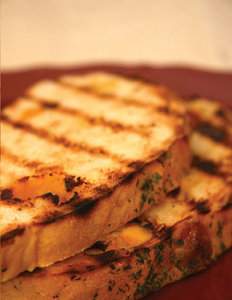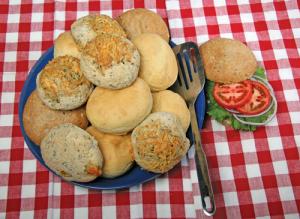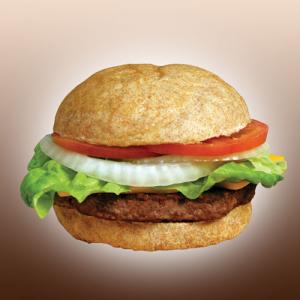The last school bell of the year has rang, the sun is making a bright appearance (or at least in some parts of the country), and the first
 official day of summer is quickly approaching. This warm weather season liberates you from the realms of your home and opens the door for your favorite summer past times such as picnics, camping, gardening, fishing, farmers markets, and of course grilling! Unfortunately, these fun summer activities also mean you are getting a little dirt on your hands and an increased risk of food borne illness too. So we are going to talk about food safety to keep you happy and healthy and most importantly outdoors all summer long!
official day of summer is quickly approaching. This warm weather season liberates you from the realms of your home and opens the door for your favorite summer past times such as picnics, camping, gardening, fishing, farmers markets, and of course grilling! Unfortunately, these fun summer activities also mean you are getting a little dirt on your hands and an increased risk of food borne illness too. So we are going to talk about food safety to keep you happy and healthy and most importantly outdoors all summer long!
Wash before you Nosh
First, it is always important to start your grilling or cooking with a clean canvas. This means keeping your workspace, utensils, dishware, grill (clean using a wire brush), and most importantly your hands unsullied. A quick rinse under water won’t do the trick either. Wet your hands thoroughly, soap up, and scrub for at least 20 seconds, rinse and dry with a paper towel (cloth towels collect germs with each use). You should wash your hands in between every task with soap and water to prevent bacteria translocation (i.e. in between cutting raw chicken then making a fresh salad). Why wash when you can just use hand sanitizer? This is because while sanitizer kills most of the bacteria it still leaves them physically behind on your hands. So sanitizer is handy when you are out and about but washing is the gold standard. Also, take off any rings or bracelets when preparing food as bacteria may become lodged within the settings. Sanitizer of a different kind (aka All Purpose Cleaner) should be used to clean your workspace before and after food preparation. Another helpful tip is to keep two different cutting boards on hand. Use one for raw foods such as fish or meat and another for ready to eat foods such as fruit for a fruit salad to prevent cross contamination. Get them in different colors so you can easily distinguish between the two.
 If you are ready to enjoy some of that fresh fruit and vegetables from the local produce stands be sure to rinse them off with running water before eating, no soap needed. Although it may not seem necessary, fruits and veggies with a thick skin such as melons still need to be scrubbed with a brush and water to remove any bacteria that may become introduced to the food during cutting. Bananas are a good example of a fruit though that needs no preparation since it has a thick peel and requires no cutting, just peel and eat!
If you are ready to enjoy some of that fresh fruit and vegetables from the local produce stands be sure to rinse them off with running water before eating, no soap needed. Although it may not seem necessary, fruits and veggies with a thick skin such as melons still need to be scrubbed with a brush and water to remove any bacteria that may become introduced to the food during cutting. Bananas are a good example of a fruit though that needs no preparation since it has a thick peel and requires no cutting, just peel and eat!
Beat the Bacteria Beast
Foods coming from animal sources are the most likely to house bacteria so extra precaution needs to be taken when handling meats, poultry, eggs, raw milk, and fish. Bacteria needs the right food, acidity, time, temperature, oxygen, and moisture to flourish and can multiply from one cell to greater than 1 billion cells in as little as 10 hours. A healthy person’s immune system can handle bacteria in normal amounts, but not at high levels. So what can you most easily manage to prevent bacteria overload? Time and temperature. This means thawing correctly, cooking and holding food to and at the right temperature, and holding for an appropriate amount of time. First, refrigerate your meat immediately by sealing and storing in an airtight container below ready to eat foods to prevent juices from dripping. If you buy but don’t plan on using your ground meat, poultry, or fish within 1-2 days or fresh beef, veal, lamb, or pork steaks within 3-5 days go ahead and freeze it. They should be good 3-4 months and 6-12 months in the freezer respectively according to foodsafety.gov. If you have a chop it will be good in the freezer for 4-6 months.
When it comes time to thaw, throw your frozen food in the refrigerator at least 24 hours before you plan on cooking. Thaw your frozen food under running water at 70 degrees Fahrenheit or lower if you want to speed up the process. If you are really under a time crunch you can quickly defrost in the microwave but you will have to throw the food on the grill immediately and should not refreeze or refrigerate without cooking. Planning on using your marinating skills to flavor your food? Be sure to set aside any marinade you plan on using for sauce before you mix it with the raw meat. If you accidently forget to separate the sauce just take some marinade and bring it to a boil to kill of bacteria before topping your prepared food. As a standard rule cook ground meat, meat mixtures, beef, veal, lamb, or poultry to 165 degrees Fahrenheit. While pork, ham, and fish only need to be cooked to 145 degrees Fahrenheit. Check foodsafety.gov as a great resource for further cooking times and temperatures.
Keep it Cool and Make it Hot
The main goal once you have prepared your food is to keep hot foods hot (greater than 140 degrees F) and cold foods cold (less than 40 degrees F). So what do you need to look out for? If you are serving buffet style, serve food a little at a time to prevent your dishes from sitting out too long. In the mean time store your cooked meat at around 200 degrees Fahrenheit in your oven or warming rack. If you are serving cold salads, rest them in trays of ice in the shade and again serve small portions at a time and store the rest in the refrigerator. If you have leftovers, wrap and refrigerate immediately in shallow containers to help cool more quickly. Toss the food if it was left out greater than two hours or greater than one hour in hot temperatures above 90 degrees Fahrenheit.
So quit reading on the computer and get to your local Great Harvest Bakery to snag some Virginia rolls, Cheddar Garlic Hamburger Buns, and some Brownies or Red, White, and Blueberry Cookies for dessert. Pair it with some homemade burgers and hit up the farmers market for fruits and veggies so you can start hosting a healthy, happy, and safe cookout with friends and family. Contact your nearest Great Harvest to see what breads, buns, and other treats they offer!
Bakery to snag some Virginia rolls, Cheddar Garlic Hamburger Buns, and some Brownies or Red, White, and Blueberry Cookies for dessert. Pair it with some homemade burgers and hit up the farmers market for fruits and veggies so you can start hosting a healthy, happy, and safe cookout with friends and family. Contact your nearest Great Harvest to see what breads, buns, and other treats they offer!
What are your favorite summer recipes?




